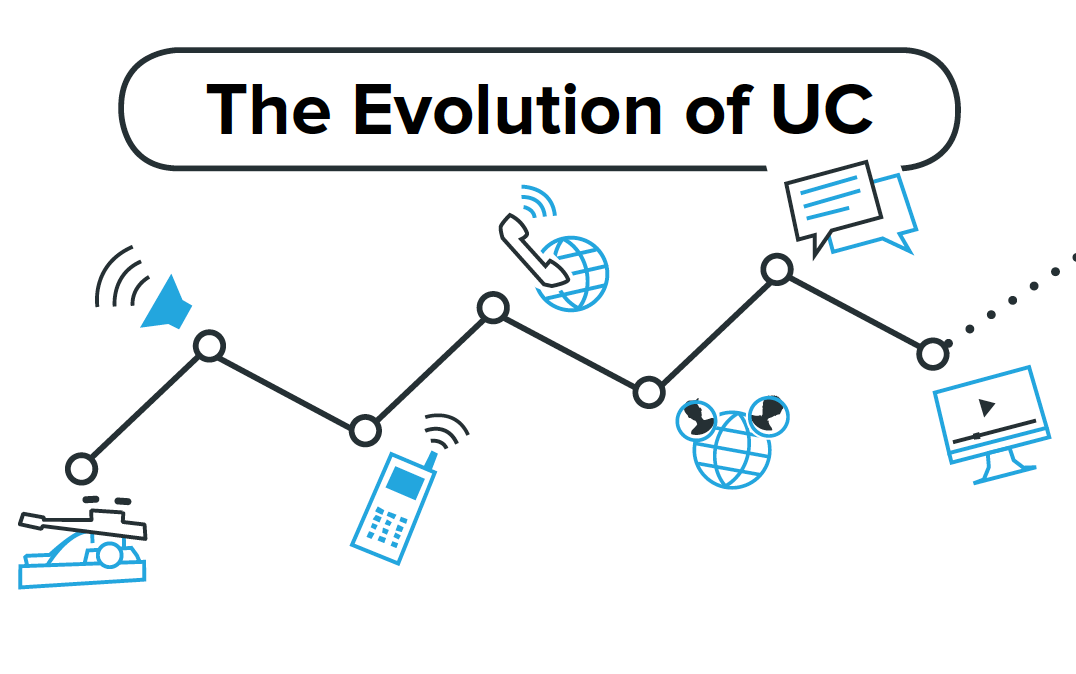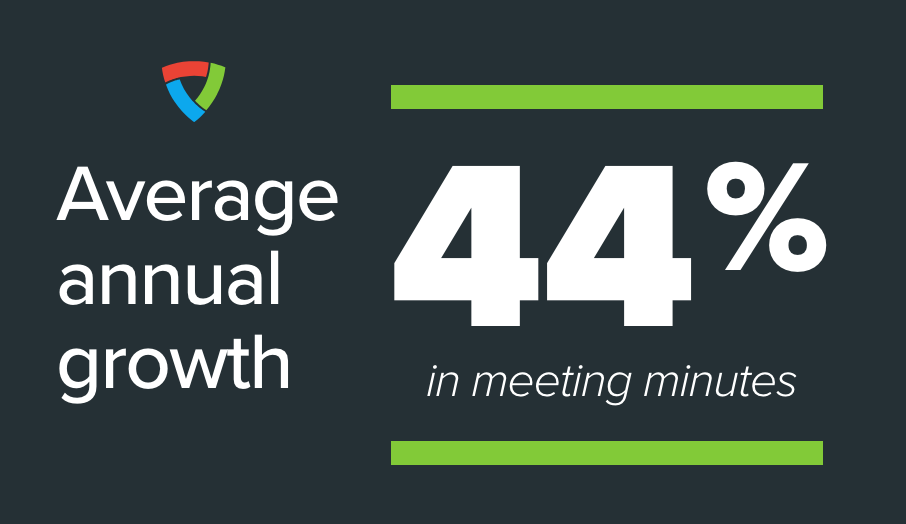
Getting things done in the world of Unified Communications can be trying, especially with all those terms and acronyms! At the end of the day, you just want to know what it all means so you can get to the task at hand (and so you don’t drop the ball at the office). To give you a leg up, we’re going to define some of the most common terms so you can find what you need and get moving!
Navigation Tips:
This post is comprised of three, alphabetized sections:
- General: Unified Communication/Telecom Terms
- Video Call Control and Management Protocols
- Video Call Quality
Although we’ve alphabetized the list of terms below, you can also use the following tactics to search for something specific.
- PC: “Control” + “F” and type the term in your new search box.
- Mac: “Command” + “F” and type the term in your new search box.
Telecom & Unified Communication Terms
Call Control: Registrar (gatekeeper) for standards compliant video endpoints and infrastructure that provides the intelligence for routing video calls and conferences. Commonly confused with “Call Manager.”
Call Detail Record (CDR): A log of call details (metadata like address, length, protocol, quality, bandwidth, etc.) generated by call control and bridge devices which is recorded at the conclusion of a call. A single call may result in multiple CDRs generated from different infrastructure pieces. CDRs are an industry log standard.
CBWFQ (Class-Based Weighted Fair Queuing): This is a mechanism used to guarantee network bandwidth to classes in an effort to group traffic. By extending to standard WFQ functionality, it provides dedicated network bandwidth for custom queues used for interactive voice and video traffic when combined with business applications. Learn more from Cisco’s Class-Based Weighted Fair Queuing and Low Latency PPT.
Chat/Messaging: Real-time text transmission over the Internet. A LAN messenger operates in a similar way over a local area network. Short messages are typically transmitted bi-directionally between two or more parties, when each user chooses to complete a thought and select “send.”
Cloud-Based Video: Cloud-based video conferencing can be used without the hardware that is generally required by video conferencing systems, and can be designed for use by SMEs (small-to-medium enterprises) or larger international companies like Facebook. Cloud-based systems can also implement mobile calls, VOIP, and other forms of video calling.
Codec (COmpressor-DECompressor or COder-DECoder): Performed with either software or a physical device, the codec is a coding and decoding device for converting video and audio to and from digital streams of packets that travel over a network. This is the core of all video endpoints. For this very reason, video endpoints are often referred to as codecs.
Content Sharing: The sharing of a screen or application through a meeting service, whether to one or many participants. This also includes live collaboration in newer applications.
CQR (Call Quality Record): Contains call details describing call quality (jitter, latency) and exact duration. CQRs are a Vyopta generated log.
CXS (Capture Transform Share): Term used to describe many video recording software systems that capture video, transform it using the codec, and share it through some media outlet, usually a website (for example, Cisco Show and Share).
DiffServ / DSCP (Differentiated Services Code Point): A model that uses six bits and maintains the IP Precedence values. The DiffServ model uses assured forwarding (RFC 2597) that defines various classes of traffic to provide for low loss, low latency, and low jitter service. The expedited forwarding is used for traffic, such as voice, that is sensitive to packet drop and delays.
DoS (Denial of Service): A network attack comprised of thousands of queries to a database that is designed to overload the system.
DMM (Digital Media Manager): Web-based media management application for managing, scheduling, and publishing compelling digital media.
Echo Cancellation: Acoustic Echo Cancellation (AEC) is a fundamental feature of professional audio- and video-conferencing systems. Echo can be defined as reflected source wave interference with the new wave created by the source (but we all know what echo sounds like). AEC is an algorithm which is able to detect when sounds, which came from the audio output, reenter the audio input of the video conferencing codec. If unchecked, this can lead to the remote party hearing their own voice coming back at them with delays and strong reverberation/feedback.
ENUM (Electronic Numbering): Used in IP-based networks to perform number based calling such as in PSTN.
Endpoint: The device that users interface with to participate in video conferencing. For example, this can include desk-phones, videophones, software clients on laptops, video room systems, and immersive telepresence rooms.
FEC (Forward Error Correction): A method used to offset video transmission errors by adding data redundancy using a predetermined algorithm. The redundancy allows the receiver to detect and correct a limited number of errors occurring anywhere in the message, without the need to ask the sender for additional data. Endpoints do not use FEC on bandwidths lower than 768 kbps, and there must also be at least 1.5% of packet loss before FEC is introduced.
FIFO (First In, First Out): Gives preference to packets based on the time they arrived in the queue.
Non-Traversal Call: A video call where the Call Control negotiates a direct point to point call that does not require control after it has been connected. The call participants connect to each other directly via RTP without traversal after the Call Control negotiates the initial connection.
On-Premise: A system or component that is deployed inside your network and data center with no need to access an external database (e.g. “the cloud”).
Video Management: Video management platforms perform multiple functions such as scheduling, video endpoint, and infrastructure monitoring, and in some cases provisioning or tracing of media flows across the network.
Video Network Services: Offers essential services such as call routing and access to external video networks. These include call control and gateways as subcategories.
Video Services: These are not required but almost all video deployment include at least one or the other if not both of the following major subcategories: 1.) video conferencing 2.) Streaming and recording.
VoIP (Voice Over Internet Protocol): In the most general sense VOIP is phone use over data networks.
VMR (Virtual Meeting Room): Virtual Meeting Room is a generic term for a meeting hosted on a bridge device. This could occur on a MCU, TPS, or other third party cloud bridging technology. It allows a meeting organizer to invite attendees, from different locations, to collaborate in real-time over the Internet. A VMR is also referred to as a Virtual Meeting Space (VMS).
Traversal Call: (media handled) A call where all media packets are sent to call controls to be translated to a different protocol or to be sent past the firewall.
Unified Communications and Collaboration (UC&C): The integration of real-time enterprise communication services such as instant messaging (chat), presence information, voice (including IP telephony), mobility features (including extension mobility and single number reach), audio, web & video conferencing, fixed-mobile convergence (FMC), desktop sharing, data sharing (including web connected electronic interactive whiteboards), call control and speech recognition with non-real-time communication services such as unified messaging (integrated voicemail, e-mail, SMS and fax).
UC is not necessarily a single product, but a set of products that provides a consistent unified user interface and user experience across multiple devices and media types.
WebRTC: Standards-based HTML5 video conferencing client that does not require executable installation to use. In short, WebRTC allows for web-based video conferencing with only a browser.
Video Call Control and Management Protocols
BFCP (Binary Floor Control Protocol): Video collaboration standard used in some SIP networks (see “SIP” below).
H.264 (Advanced Video Coding): An industry standard for video compression, the process of converting digital video into a format that takes up less capacity when it is stored or transmitted.
H.264 (Scalable Video Coding): An extension of the H.264 (MPEG-4 AVC) video compression standard for video encoding. The SVC codec translates bits from a network data stream into a picture and conversely translates camera video into a bit stream. It breaks up video bit streams into bit stream subsets that add layers of quality and resolution to video signals. Also known as H.264G.
H.265 (High-Efficiency Video Coding): Provides superior video quality and up to twice the data compression as the previous standard (H.264 AVC). It can support high-definition video.
H.320 (ISDN): Primarily used for running video data over ISDN based networks – typically video conferencing and video telephony systems. It describes a generic system configuration consisting of a number of elements which are specified by respective ITU-T Recs, definition of communication modes and terminal types, call control arrangements, terminal aspects and interworking requirements.
H.323 (IP): The original video/audio standard for IP voice and video calls, still in common use today. While SIP does not define how application sharing should be implemented, H.323 defines it clearly through Annex Q and its implementation of H.281 and H.224. Application sharing is also very well defined in H.323, which uses H.239 to support it.
SIP (IP): The most common video/audio standard that exists today for IP voice and video call setup. SIP defines a client/server relationship so that the endpoints can make use of services, resources, and dialable destinations that are unknown to the endpoints. In most enterprise deployments that use SIP, it is deployed with a call control element (client/server model) to provide a feature-rich experience, control over the dialable domains, and centralization of call control. SIP elements consist of two basic categories: user agent client and user agent server. SIP can also enable instant messaging and presence.
Video Call Quality
Congested Packet Loss: When packet loss comes and goes, this can be due to a busy network. Unlike the constant asymmetrical packet loss caused by a duplex mismatch issue, congested packet loss occurs often during peak times with high traffic volume.
Constant Asymmetrical Packet Loss: If packet loss occurs in one direction (let’s say you’re on a point-to-point call and somebody is experiencing heavy packet loss), the devices connected via Ethernet may have a duplex mismatch. Ethernet has the option of running at different speeds (10, 100, or 1 Gbps). If devices do not properly negotiate their connection, packet loss can occur.
Frame Rate: This is a measurement of frame refresh frequency or the number of frames per second received during a video connection. It can be dynamically adjusted by video applications to adapt to changes in the video feed (e.g., movement) or to offset bandwidth limitations.
Jitter: Generally, video jitter is the dislocation of packets in a stream, and can result in blurs or pixelation of the video. It is interesting to note that Jitter has an equal, if not larger, impact on audio quality and results in audio sounding “robotic” or as if the user is talking underwater.
Latency: The time discrepancy between when a transmitted video frame is received and when it is displayed. Low latency is a design goal for any system where there is real-time interaction with the video content, such as video conferencing. Latency is most commonly expressed in time units (e.g., seconds or milliseconds).
Packet Loss: The act of losing or dropping certain sections, or packets, of the digital data stream between two points. It is generally perceived as a momentarily frozen or blank screen in a call and can eventually lead to a call being dropped completely.
BONUS: Cisco Semantics
Since Cisco dominates the Unified Communications and video conferencing market, it’s good to know the Cisco lingo. Here are some of the most common:
Call Manager: An older term for Cisco’s original VOIP telephony platform. Within modern context, this term usually applies to Cisco’s CUCM. Should not be confused with “Call Control.”
CMR (Collaboration Meeting Rooms): Cisco’s proprietary video conferencing feature available to all users with the WebEx Meeting Center subscription. Please note that this is a VMR hosted on Webex cloud unless stated otherwise.
Codian: Often used in interchangeably or in conjunction with MCU. Codian is a former supplier of video conferencing products. The company became part of Tandberg in 2007, which became part of Cisco Systems in 2010. One can still often hear references to “Codian bridges” (MCUs).
Conductor: An application that manages pools of bridges (MCUs) or telepresence servers (TPS). Conductor manages bridging resources, meaning that the end-user (caller or IT personnel) doesn’t have to manage individual bridge capacity.
CUCM (Cisco Unified Communications Manager a.k.a “Call Manager”): A Unified Communications call control solution. This is called ‘Unified’ because it brings together telepresence, chat, audio, and video components. Uses exclusively SIP protocol. For example, this can include call bridges or physical endpoints like telepresence rooms or desk phones!
It also lets CUCM seamlessly escalate a point-to-point conference into a multipoint call simply by adding another call participant.
MCU (Multipoint Control Unit): A physical or virtual device used to bridge video calls. It allows multiple endpoints to participate in a multipoint conference.
TCS (Cisco’s TelePresence Content Server): Allows an organization to record and stream video conferences and multimedia presentations. This includes video-on-demand and external streaming capability.
TMS (Cisco’s TelePresence Management Suite): Allows for managers of registered devices and infrastructure. Includes an admin console with inventory (listed infrastructure), some call logs, and can be used to facilitate meeting scheduling (bookings).
TPS (Cisco’s TelePresence Server): Originally a physical appliance, it now can be installed on virtualized on special server setups. This enables call bridging and functions similar to an MCU, providing proprietary video conferencing services to video endpoints.
VCS (Video Communication Server): Full featured video call control that allows for the of registered endpoints and infrastructure (both physical and software) as well as firewall traversal. Can use either H.323 or SIP protocols.
…and we’re just scratching the surface! There’s a whole host of industry acronyms and abbreviations and specific terms related to Polycom, Pexip, and Acano (now Cisco Meeting Server). Don’t worry, we’ll be sure to cover the other service providers in a future post.
Didn’t find what you were looking for? We highly encourage you to show your smarts by using the comments section below to help us help you! We’ll be sure to keep this list updated so you can confidently reference it anytime!

.png?width=1920&height=1080&name=cta-benchmark-uc-env%20(1).png)

![Guide: Unified Communications Reporting by Quarter [Template Included]](https://go.vyopta.com/hubfs/Imported_Blog_Media/2017-01-17_1200.png)
